This kit resulted in a wort with an original gravity (a measurement that roughly indicates available fermentable sugar) of 1.082. The alcohol content of the final beer can be calculated by looking at the difference in original and final gravity. In a rough sense, that difference indicates the amount of sugar consumed by the yeast, which indicates the amount of alcohol produced. The instructions state we should see a final gravity of 1.010 to 1.015, which, if my calculations are correct, will produce a beer in the neighborhood of 9% abv. WOOOO-EEEE!!
As usual, here are some photos of the experience. Unfortunately, my camera batteries died in the middle of the process, though to be honest, the final steps to making this beer weren't much different than my previous two batches. The only difference was that we used a yeast starter instead of dried yeast to inoculate the wort. See my earlier post about making a starter for this beer.
The fuel necessary to produce a tripel.
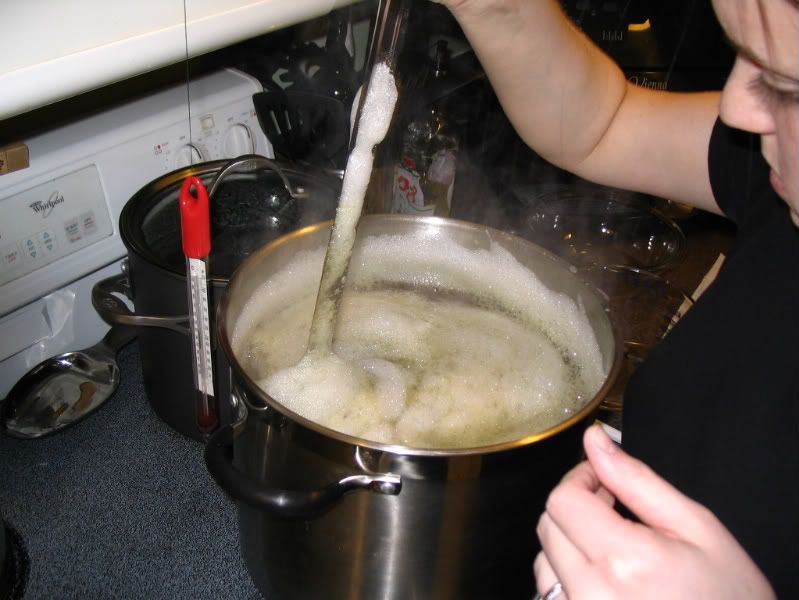 (The camera died at this point, but we basically boiled this
(The camera died at this point, but we basically boiled thisfor an hour and added the hops at the appropriate times.)
Hour 11, working up a good fermentation next
to the Digby IPA, now nearly dormant.
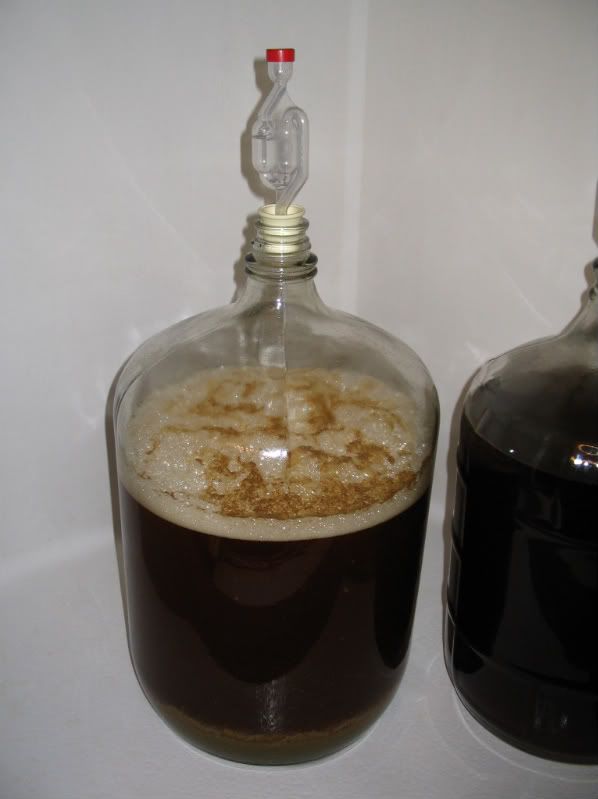
Yesterday, about two days into the fermentation, the yeast were having a crazy party on the inside of the carboy. Things were churning like mad and the airlock was bubbling more than once a second, by far the most active beer we've yet produced. I hope the final beer produces a party as rockin' as that!

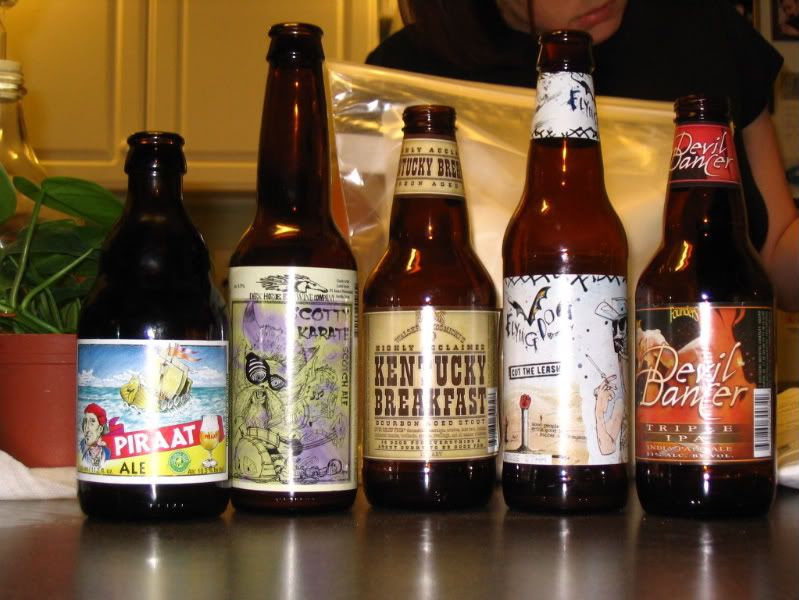
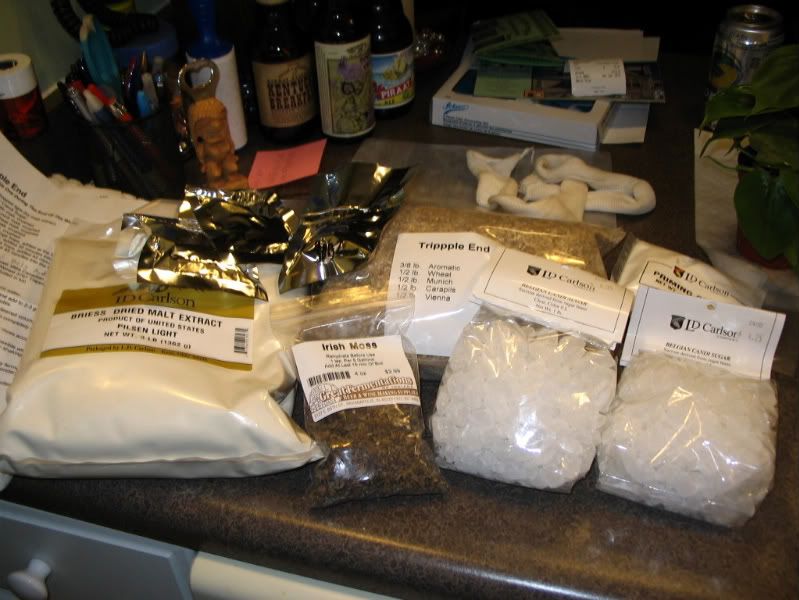
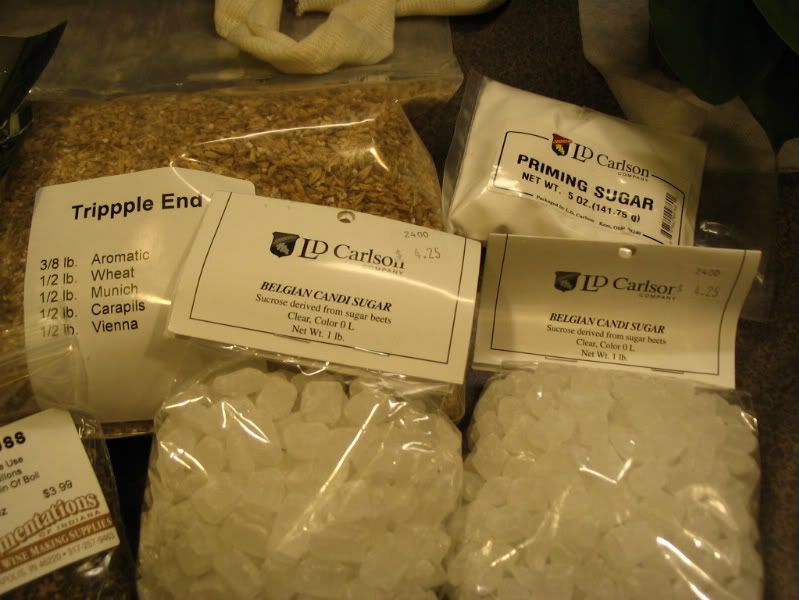
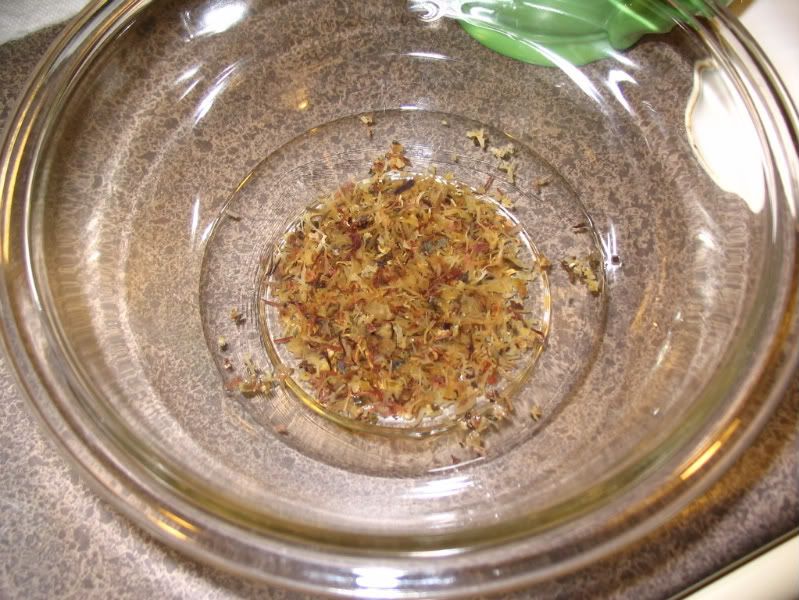
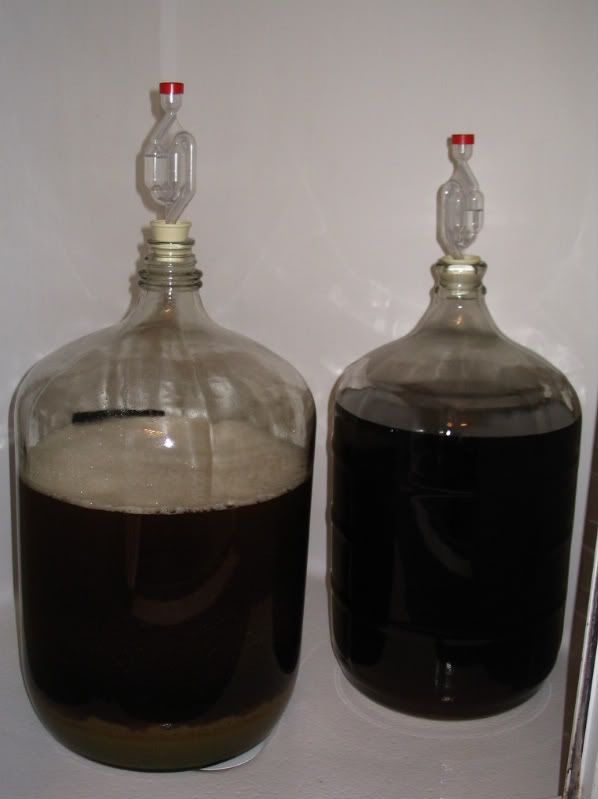
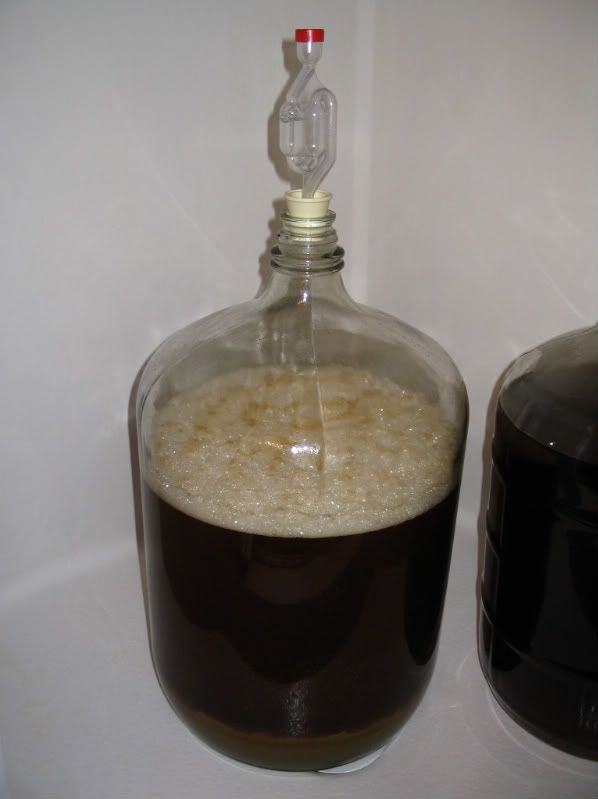


8 comments:
Is it just me or does all beer look the same in the carboy?
Also Piraat is gross.
I think Piraat is overpriced, but gross? That's going a bit far!
I've also noticed that beers look essentially the same in the carboy. My guess is that the similar color has to do with the width of the carboy. Anything even a shade darker than a lager won't let much light pass through.
And the flash on the camera doesn't help beer pictures in general. I've had pints of beer appear black in pictures that were nowhere near black in real life.
Okay, okay, not gross. Inferior to other Belgian beers. How's that?
Piraat rocks. So having invested the time and money in the brewing equipment, has it been worth it so far? Is it difficult in any way? Is there a lot of mess?
It's probably about time I look into doing it myself, though space is at a premium in my house.
Mike -- absolutely worth it! The experience of making your own beer is very rewarding. And from a financial aspect, you can make fresh tasty beer from a kit for about $0.60 per 12oz. bottle. Of course, that neglects the up-front equipment cost, but I plan to make beer for years to come.
It's really not hard at all. It just takes some mental preparation about a day in advance to make sure you've got everything you need all set out, CLEAN and ready to go before you start. Clean, clean, clean is the key.
The process isn't too messy, but you're sure to drip some sticky stuff here and there. As far as I know, there are really only two things that can make a big mess:
1. Boiling over your wort will create a huge sticky mess. In three batches, it hasn't happened to me yet, but it's come pretty close. The most likely point for boil-over is when the malt reaches the boiling point and you throw in your first round of hops. For whatever reason, the hops create a big froth for the first 15-20 seconds. Knowing that, I just bring the malt to a boil, take it off heat, add the hops and then put it back on the burner when the frothing subsides.
2. During primary fermentation, if the foam gets to the top of the carboy, sugar and other particles can clog the airlock, leading to CO2 buildup and a beer explosion. That generally shouldn't happen if you use a 6.5 gallon carboy for 5 gallon batches but you should probably have a place to put the carboy where an explosion won't be a big deal just to be sure. (There are also techniques for smaller carboys and "blow-off" but I won't go into that.)
A 22-quart stock pot also reduces the chances of a boil over. It also increases the chances of a chili cook-off.
Another way to avoid boil over when bringing that wort up to a full boil is to have a spray bottle filled with water. Set the sprayer to mist and as it starts frothing up you just spray it heavily. All that froth will usually drop down almost instantly. After that you should be good to go the rest of the way with no worries.
Cool tip! Thanks for that.
Post a Comment